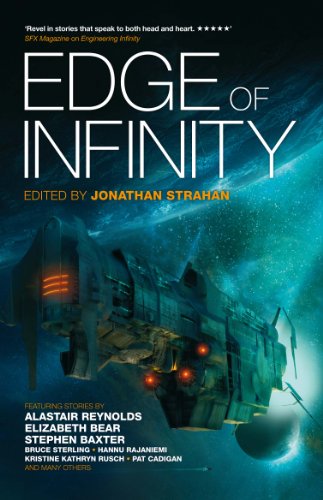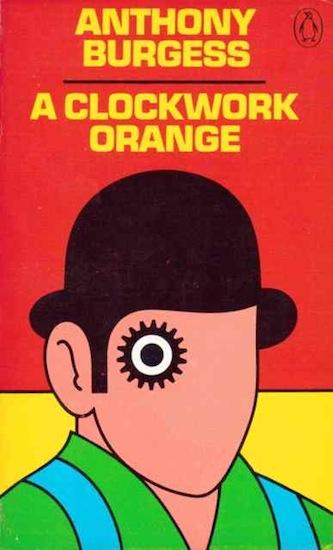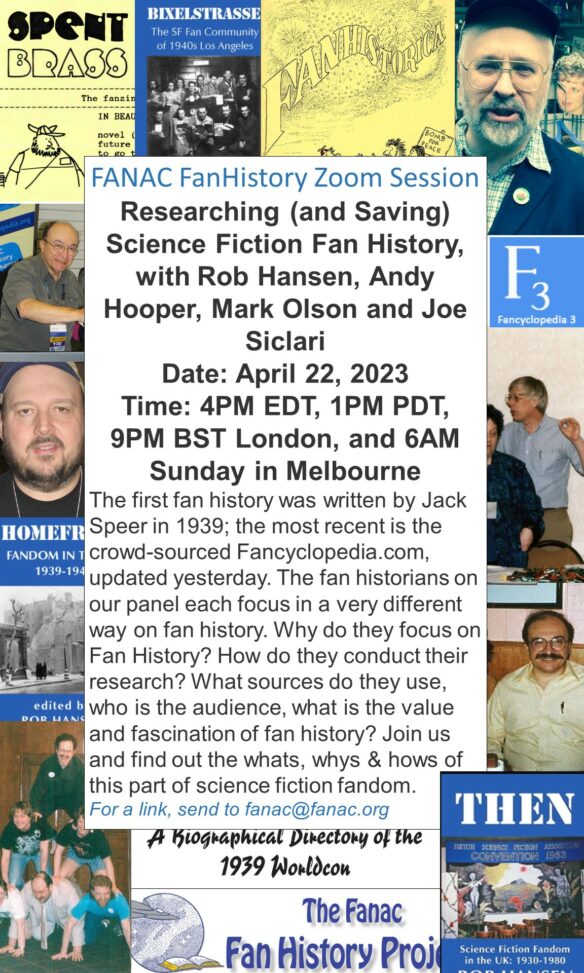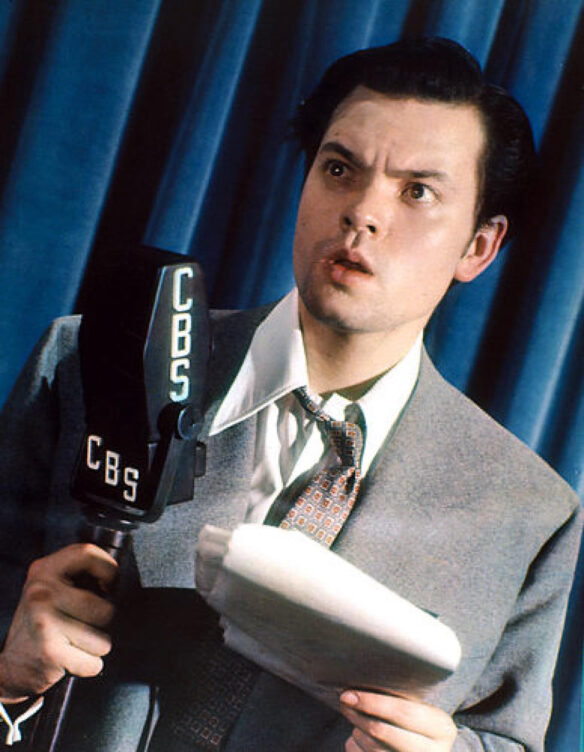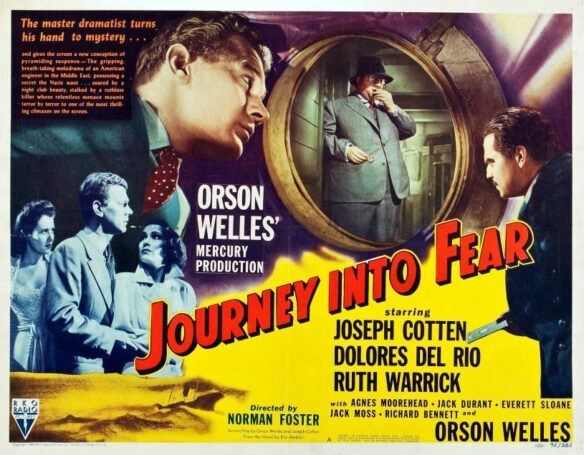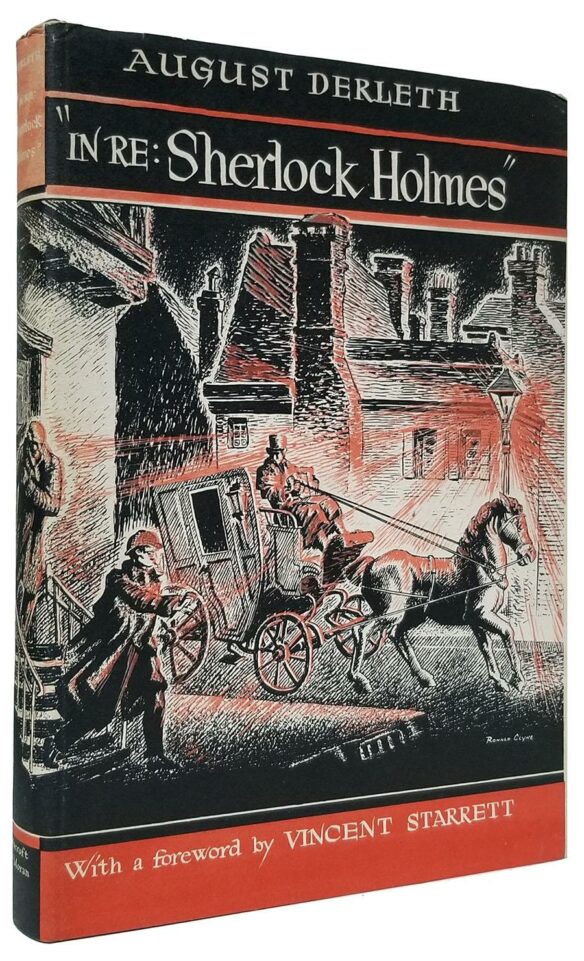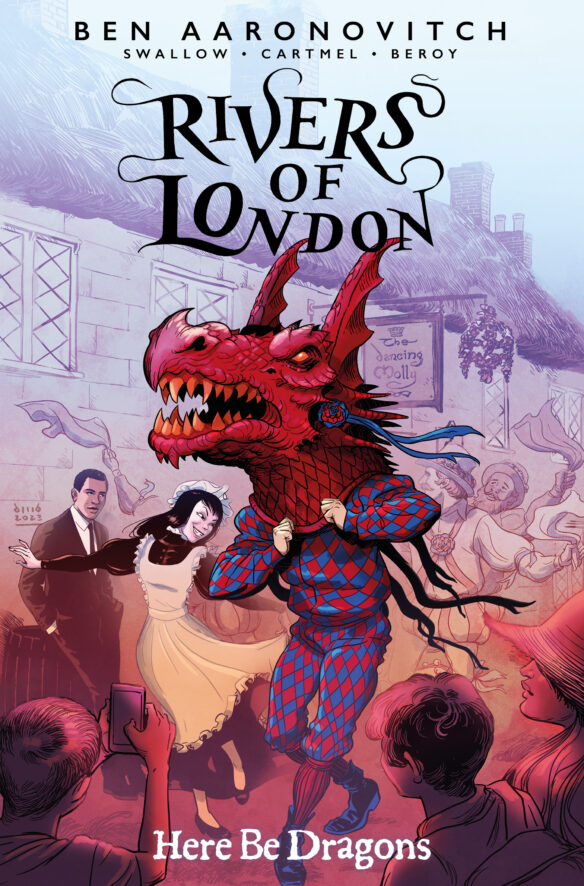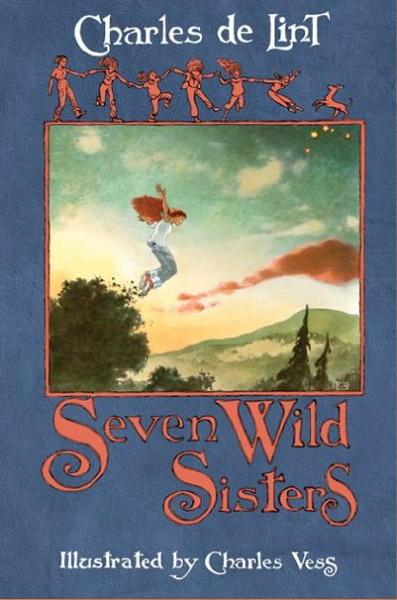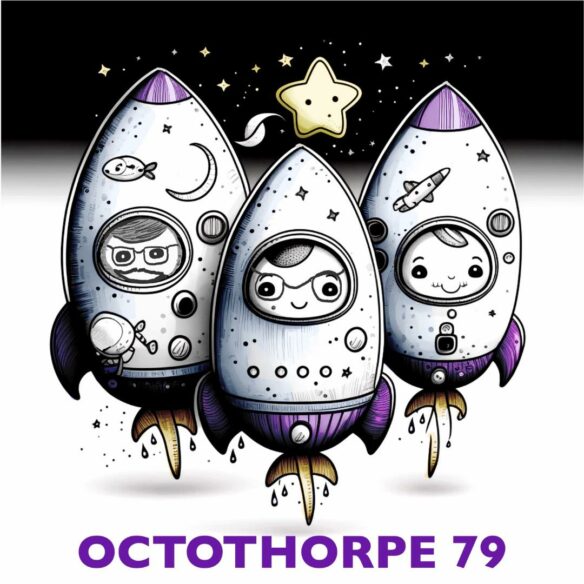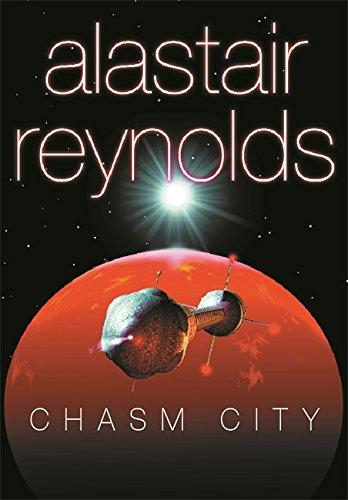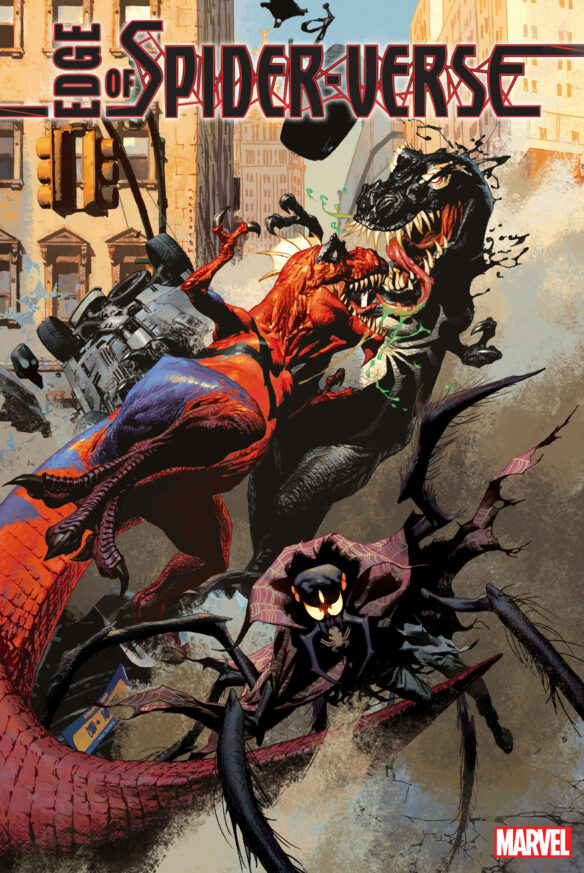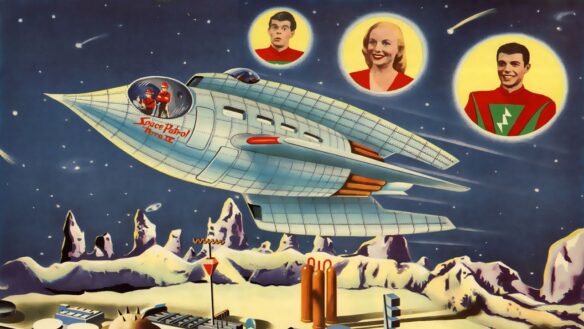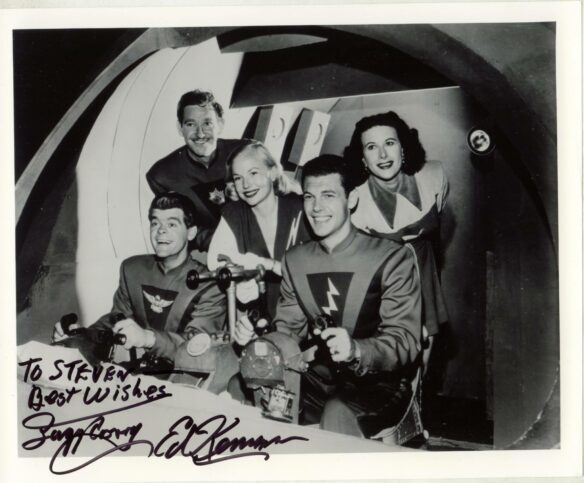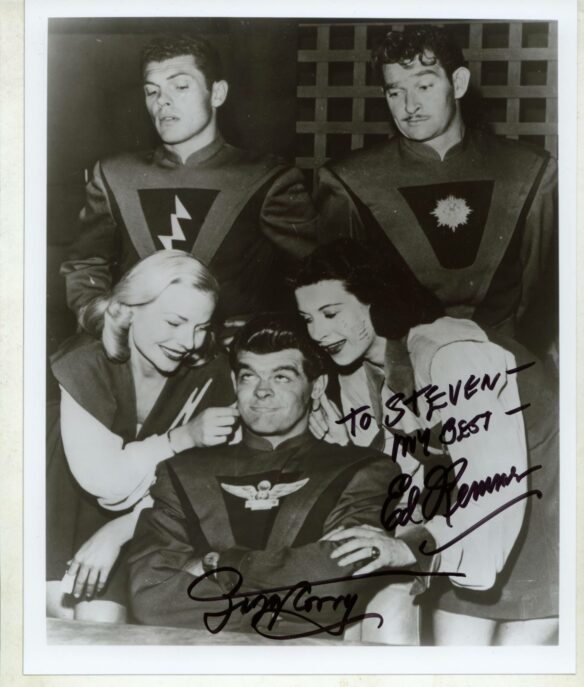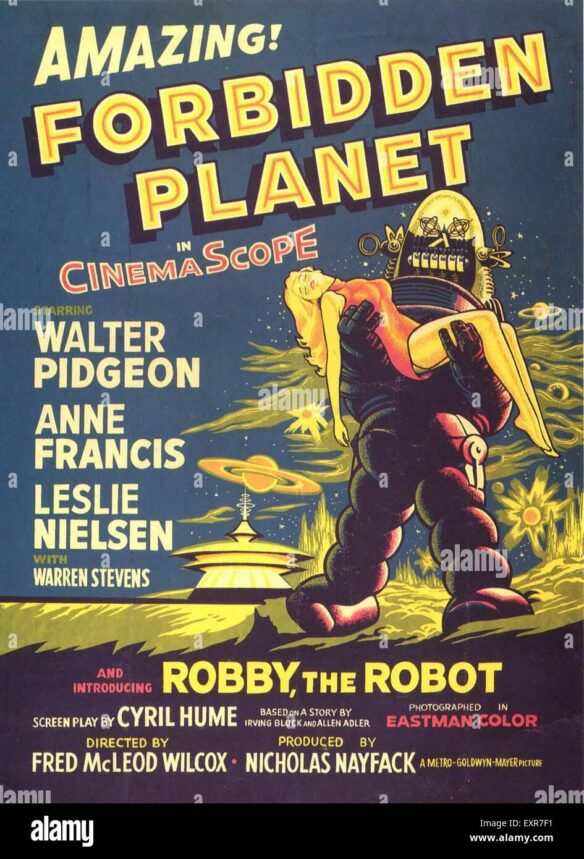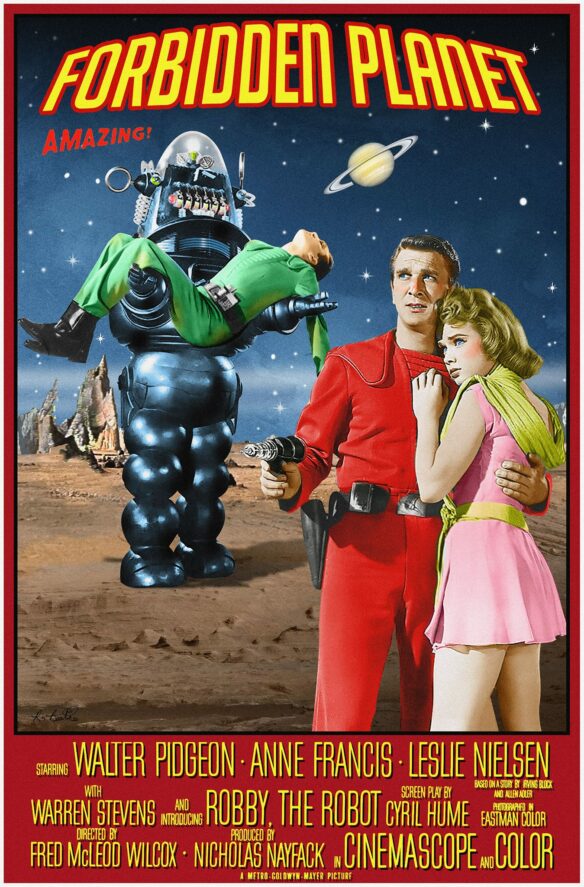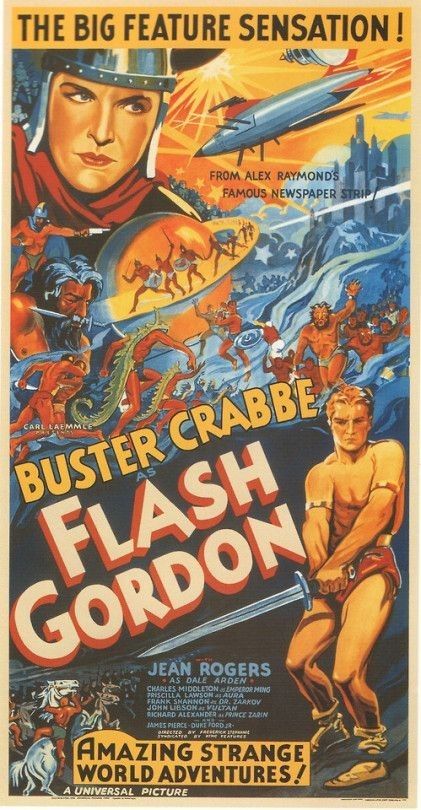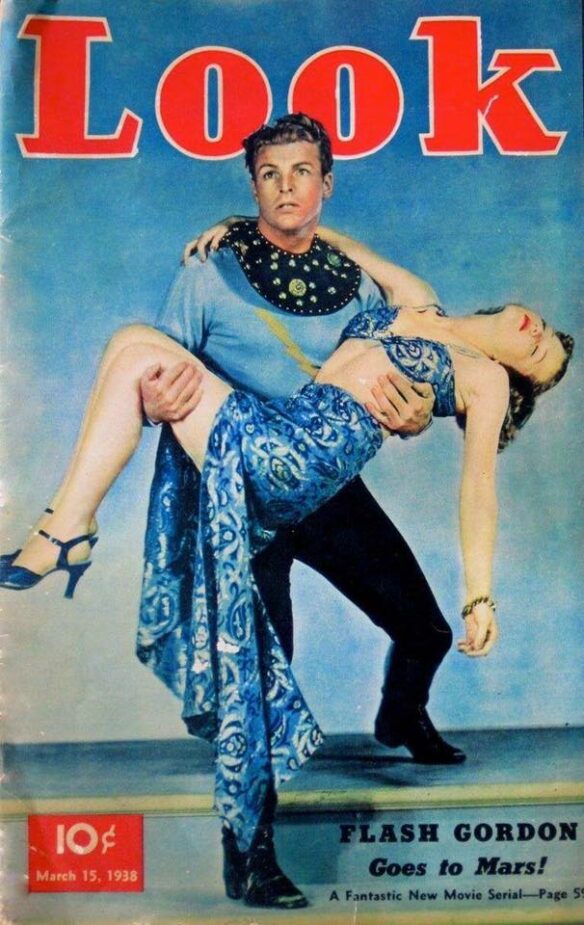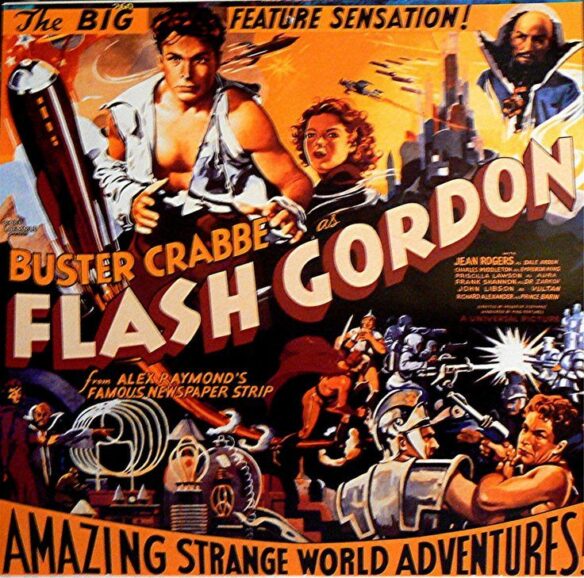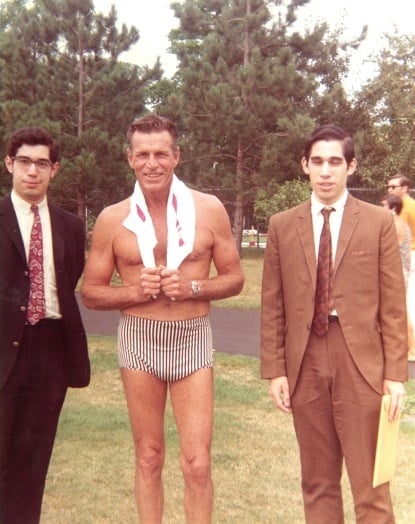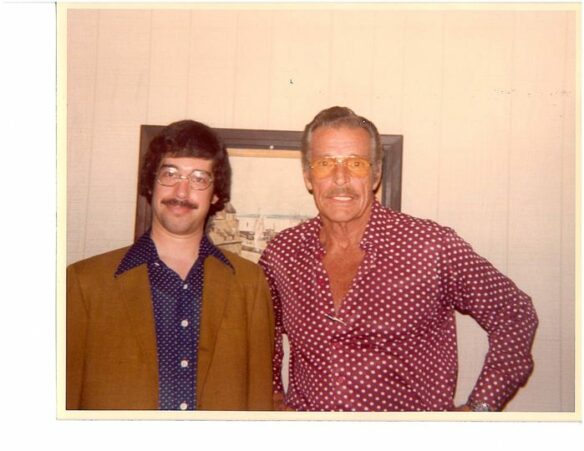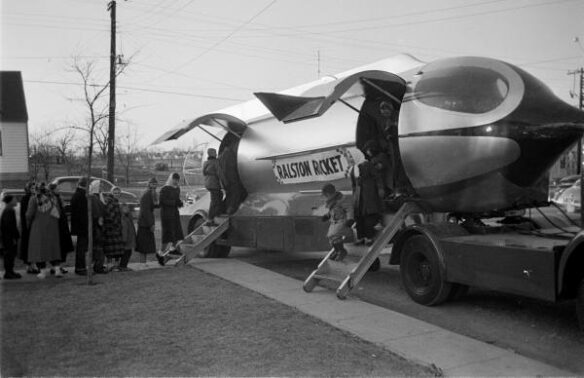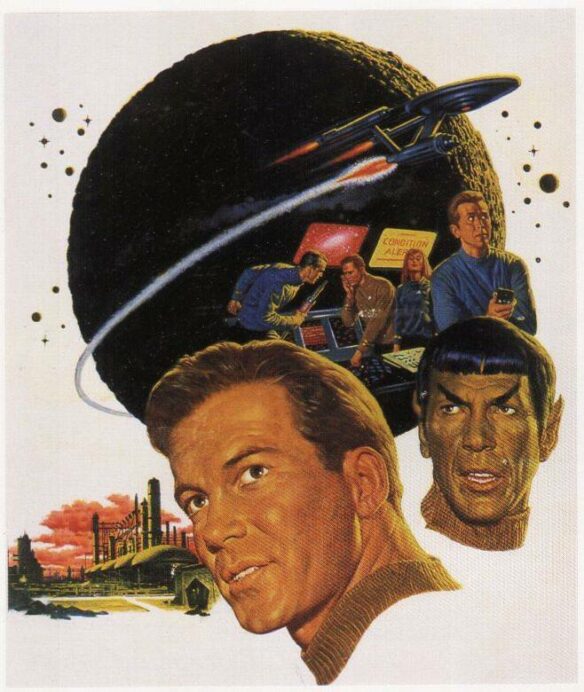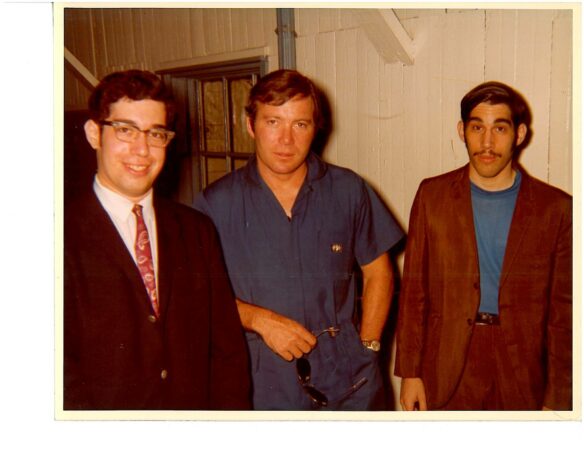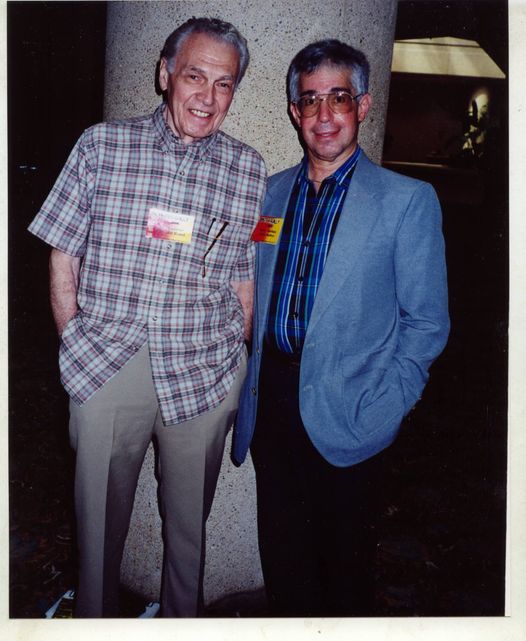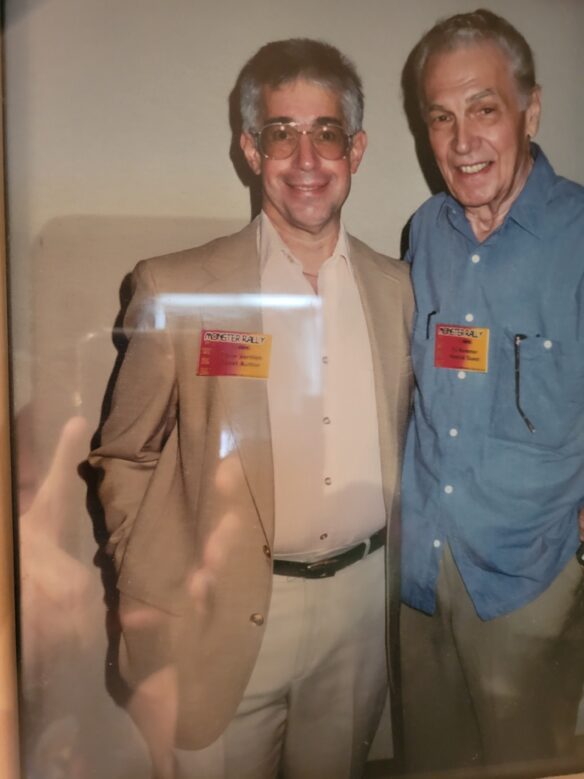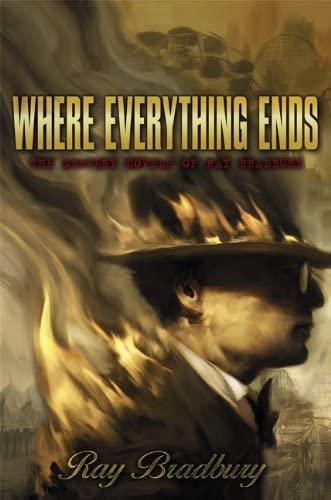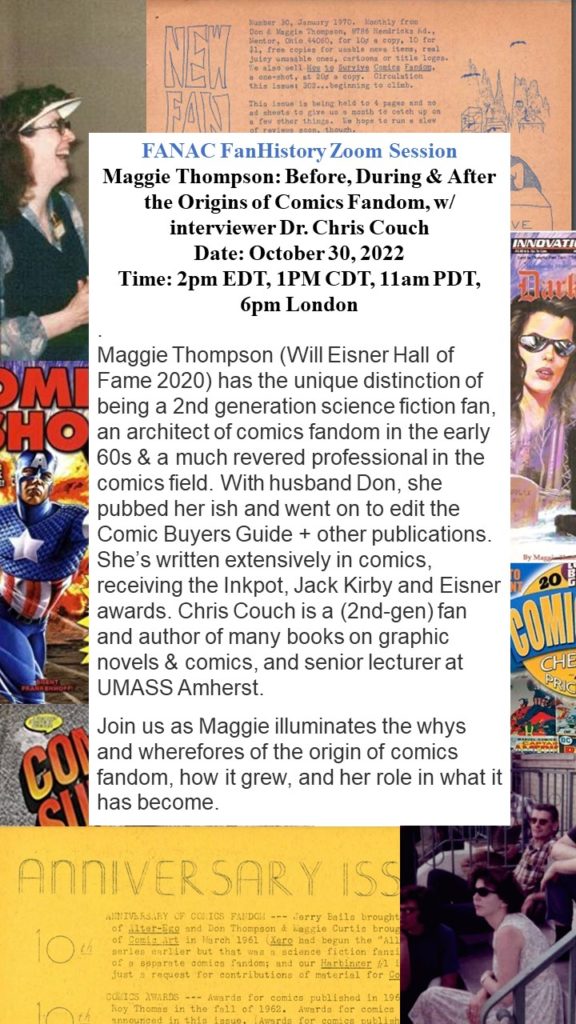(1) MARKOWITZ AWARD WINNERS. Naseem Jamnia and Maya Salameh are the winners of the 2023 Markowitz Award for Exceptional New LGBTQ Writers. Naseem Jamnia is a widely-recognized sff writer. See Lambda Literary’s interview here: “Four Questions with Naseem Jamnia”.
The Judith A. Markowitz Award for Exceptional New LGBTQ Writers recognizes LGBTQ-identified writers whose work demonstrates their strong potential for promising careers. The award includes a cash prize of $1,500. This year, the award goes to Naseem Jamnia and Maya Salameh.
Naseem Jamnia (they/them) is the Locus-nominated author of The Bruising of Qilwa, a novella introducing their queernormative, Persian-inspired world, which was shortlisted for the IAFA’s Crawford award. Named the inaugural Samuel R. Delany Fellow, they’ve also received fellowships from Lambda Literary and the Otherwise Award, and their nonfiction has appeared in The Rumpus, The Washington Post, Cosmopolitan, New Orleans Review, Sarah Gailey’s Stone Soup newsletter, and other venues. They are the managing editor of Sword & Kettle Press, a tiny independent publishing house of feminist speculative writing, and their debut middle grade horror, Sleepaway, is out in 2025 from Aladdin. Find out more and sign up for their newsletter at naseemwrites.com, or follow them on social @jamsternazzy.
How has access to queer literature/queer stories impacted your life as a queer person and shaped you as a queer writer?
When I was growing up, the closest I saw my gender portrayed in stories was with the “girl disguises herself as a boy to do the thing” trope, a la Mulan and Tamora Pierce’s Alanna books. I had to resort to fanfiction to explore queerness in terms of sexuality (and even then, rarely or never saw a portrayal of someone on the asexual spectrum). Much of my own writing growing up explored these issues inadvertently and vaguely, as I did not know what I was exploring at the time. However, once terms like “nonbinary” or understanding of transness outside a binary entered the public lexicon in the last 10-ish years, the wealth of queer literature we’ve seen explicitly including various identities has made a world of difference, helping me to understand and embrace my own various identities, which has since allowed me to live as my truest self. With this clearer understanding, I’ve taken the lack of what I saw growing up to turn into what I wish I had seen and where I wish we can go in the future. I’m grateful so many queer books exist now for kids and adults alike to explore the multiplicity of queer experiences….
(2) REUBEN FINALISTS INCLUDE TWO SFF ARTISTS. [Item by Dariensync.] Girl Genius creator Phil Foglio and frequent Neil Gaiman collaborator Colleen Doran have both been nominated for Reuben Awards by the National Cartoonist Society. Foglio for Online Comics: Long Form for Girl Genius, Doran for Best Graphic Novel for her adaptation of Neil Gaiman’s Chivalry. “Finalists Announced For 2022 NCS Divisional Awards For The 77th Annual Reubens”.
(3) STARS ON MARS. You can watch the first aired episode of Stars on Mars on the FOX website. William Shatner serves as Mission Control.
Here’s an excerpt. “Celebrities Try To Fix A Fallen Satellite Tower”.
(4) NOT AS SPECIAL EFFECTS? Oh no, some of them were very special. Ranker came up with a list of“11 Classic Fantasy Movies Made Before CGI”.
Many fans feel that modern fantasy movies began in 2001 with the one-two punch of The Lord of the Rings: The Fellowship of the Ring and Harry Potter and the Sorcerer’s Stone. Both having been produced after the CGI revolution of the 1990s, they applied the full power of the latest visual effects techniques to bring two beloved fantasy book series vividly to life.
But fantasy films go back a lot further than 2001. Since the dawn of movies, imaginative filmmakers have striven to use the medium’s unique capabilities to bring to life visions that cannot exist in reality. Long before computers were rendering T. rexes and Orc armies, special-effects crews had already amassed a huge bag of tricks to put fantastical stories on the screen, including stop-motion, bluescreen, forced perspective, puppets, and giant props.
Three of the four most highly-rated films have effects by Ray Harryahausen. Number one is –
Jason and the Argonauts
A retelling of the myth of the Golden Fleece, 1963’s Jason and the Argonauts was one of the peaks of Ray Harryhausen’s special effects career. Numerous striking effects appear throughout the film, but the show-stopper is the epic battle where Jason and his men confront an army of magically animated skeletons.
Harryhausen recalled the incredibly painstaking work that went into the sequence:
I had three men fighting seven skeletons, and each skeleton had five appendages to move in each separate frame of film. This meant at least 35 animation movements, each synchronized to the actor’s movements. Some days I was producing just 13 or 14 frames a day, or to put it another way, less than one second of screen time per day, and in the end the whole sequence took a record four and a half months to capture on film.
(5) YOU SAW IT HERE FIRST. At Galactic Journey, John Boston reviews the issue of Amazing which scored the coup of publishing an excerpt from Delany’s Nova, the novel Campbell declined to serialize in Analog: “[June 6, 1968] The Stalemate Continues (July 1968 Amazing)”.
Once more, all but one item of fiction are reprints, though this issue’s exception is more considerable than some: House A-Fire, by Samuel R. Delany, described as a short novel (at 33 pages!) on the cover and contents page, though editor Harrison acknowledges in the letter column that it is actually an excerpt from Delany’s new novel Nova, forthcoming from Doubleday. Delany’s name is misspelled on the cover and contents page and in Harrison’s editorial, spelled correctly on the story’s title page and in the letter column. Are you getting tired of all this nit-picking? So am I. But the persistent sloppiness of this magazine continues to irritate….
(6) LIAGUNO Q&A. One of the Horror Writers Association “A Point of Pride” blog posts is an “Interview with Vince A. Liaguno”.
What was it about the horror genre that drew you to it?
I’m less certain that I chose horror; I think horror chose me. Truthfully, from as far back as I can remember, I was drawn to all things dark. As a kid, my earliest recollections of being terrified were watching made-for-TV movies from the 70s like Don’t Be Afraid of the Dark, Gargoyles, and Trilogy of Terror. I can still remember damn near pissing myself when that little Zuni fetish doll from the latter chased poor Karen Black around her apartment! (laughs)
As I got a little older, my Dad would take me to the movies as part of our weekend “buddy days”. They were usually Irwin Allen disaster flicks or movies with a lot of car chases, but then a little film called Jaws was released. I was eight years old and can still feel the knot in my stomach the first time I heard those opening notes of John Williams’ now-legendary score. I think I only made it up to the point that the ill-fated skinny-dipping Chrissie gets slammed into the buoy before I pleaded with my Dad to leave. It would take three subsequent tries before I could make it through the entire film, each time making it a little further into the film before my ever-patient father heard the desperation of the “Please, Daddy…can we leave now?” in my voice. Jaws was a rite of passage for me; it was the first time I needed to summon and sustain any sense of real bravery. When I finally saw those end credits, it was a mark of accomplishment… a hint of manhood, if you will.
1978 was a game changer for me—the cusp of adolescence and the release of John Carpenter’s Halloween. If Jaws hooked me, Halloween reeled me in and cemented what would become a lifelong adoration of both slasher films and a certain actress named Jamie Lee Curtis.
(7) MEMORY LANE.
2005 – [Written by Cat Eldridge from a choice by Mike Glyer.]
I won’t say that Haruki Murakami is author that I’m at familiar as he isn’t. Kafka on the Shore is the English translation of the original Japanese publication which is this, 海辺のカフカ.
Alfred Knopf published the first English language edition eighteen years ago.
It would win a World Fantasy Award.
It is an available from the usual suspects.
And now for our Beginning…
So you’re all set for money, then?” the boy named Crow asks in his typical sluggish voice. The kind of voice like when you’ve just woken up and your mouth still feels heavy and dull. But he’s just pretending. He’s totally awake. As always.
I nod.
“How much?”
I review the numbers in my head. “Close to thirty-five hundred in cash, plus some money I can get from an ATM. I know it’s not a lot, but it should be enough. For the time being.”
“Not bad,” the boy named Crow says. “For the time being.
I give him another nod. “I’m guessing this isn’t Christmas money from Santa Claus.”
“Yeah, you’re right,” I reply.
Crow smirks and looks around.
“I imagine you’ve started by rifling drawers, am I right?”
I don’t say anything.
He knows whose money we’re talking about, so there’s no need for any long-winded interrogations.
He’s just giving me a hard time.
“No matter,” Crow says. “You really need this money and you’re going to get it—beg, borrow, or steal. It’s your father’s money, so who cares, right? Get your hands on that much and you should be able to make it. For the time being. But what’s the plan after it’s all gone? Money isn’t like mushrooms in a forest—it doesn’t just pop up on its own, you know. You’ll need to eat, a place to sleep. One day you’re going to run out.”


(8) TODAY’S BIRTHDAYS.
[Compiled by Cat Eldridge.]
- Born June 7, 1944 — Mildred Downey Broxon, 79. Author of three novels and some short stories, heavy on Nordic-German mythology. The Demon of Scattery was co-written with Poul Anderson. There are no digital books available for her and her printed editions are out of print now. I see no sign that her short fiction has been collected into a volume to date.
- Born June 7, 1952 — Liam Neeson, 71. He first shows up in genre films as Gawain in Excalibur and as Kegan in Krull. He plays Martin Brogan in High Spirits, a film I enjoy immensely. Next up is the title role in Darkman, a film I’ve watched myriad times. He’s Dr. David Marrow in The Haunting which I’d contend is loosely off of The Haunting of Hill House by Shirley Jackson. Now we get him as Qui-Gon Jinn in The Phantom Menace. Followed unfortunately by his horrid take as Ra’s al Ghul in Batman Begins and as a cameo in the The Dark Knight Rises. Now he voiced Aslan with amazing dignity in The Chronicles of Narnia franchise and voiced Zeus as well in the Titans franchise.
- Born June 7, 1954 — Louise Erdrich, 69. Writer of novels, poetry, and children’s books featuring Native American characters and settings. She is an enrolled member of the Turtle Mountain Band of Chippewa Indians. Her genre work includes according to ISFDB the Ojibwe series of The Antelope Wife which won a World Fantasy Award and The Painted Drum, plus stand-alone novels of The Crown of Columbus (co-written with her husband Michael Dorris) and Future Home of the Living God.
- Born June 7, 1968 — Sarah Parish, 55. In “The Runaway Bride“, a Tenth Doctor story, she got to play, with the assistance of extensive CGI, one of the nastiest Who villains to date, The Empress of the Racnoss, an oversized vicious spider with a human face. Great episode. It’s our introduction to Donna Noble, his Companion for quite some time to come. In a much lighter role, she played Pasiphaë on BBC’s Atlantis series.
- Born June 7, 1969 — Anthony Simcoe, 54. Ka D’Argo in Farscape, one of the best SF series ever done. If you don’t watch anything else, just watch the finale, The Peacekeeper Wars as it’s fairly self contained. Farscape is the SF he did. If you can find a copy, Matt Bacon’s No Strings Attached: The Inside Story of Jim Henson’s Creature Shop is a wonderful look at the creation of the creatures on the show including D’Argo facial appendages.
- Born June 7, 1972 — Karl Urban, 51. He’s in the second and third installments of The Lord of the Rings trilogy as Éomer. He is McCoy in the Trek reboot franchise, Cupid on Xena: Warrior Princess and Hercules: The Legendary Journeys, John Kennex on Almost Human, Vaako in the Riddick film franchise, and Judge Dredd in Dredd. For the record, I liked both Dredd films for varied reasons.
- Born June 7, 1974 — David Filoni, 49. Creator and an executive producer on Star Wars Rebels, a most awesome series, for all four seasons, and was supervising director and a writer on another excellent series, Star Wars: The Clone Wars. (I like the animated series far better than the live action films.) He makes his live acting debut in The Mandalorian playing Trapper Wolf, an X-Wing pilot, in “The Prisoner” episode. It’s also worth noting that he his first job was directing episodes during the first season of animated series Avatar: The Last Airbender
- Born June 7, 1979 — Anna Torv, 44. She’s best known for her role as FBI agent Olivia Dunham on Fringe. She also played an ITU nurse in Frankenstein, a modern adaptation of that novel. She voiced the lead of Nariko in the animated Heavenly Sword film based off the game of the same name.
(9) COMICS SECTION.
- The Argyle Sweater reveals an astronomical feature apparently known only to Federation navigators.
(10) HAMMER AND CHISEL. The Tom Brevoort Experience reproduces some of the 1938 letters between Detective Comics Inc. (DC) and Superman co-creator Jerry Siegel. The issue? Money, naturally. “The Selling of Superman: Correspondence between Jack Liebowitz and Jerry Siegel”.
…Above you see the first page of a letter sent by Jack Liebowitz to Jerry Siegel on September 28, 1938. For context, as this point, ACTION COMICS #5 had been published and the character of Superman was heating up. The McClure Newspaper Syndicate, which had been noncommittal about their interest in developing Superman as a newspaper strip, suddenly showed new signs of life, which had caused Siegel to write to Detective Comics and request that they return all rights but first publication to Superman to Siegel and Shuster. As you can imagine, Jack Liebowitz and his boss Harry Donenfeld weren’t having any part of that….
(11) VISITING SPACE. [Item by Mike Kennedy.] This $50 Lego set was inspired by a group of “space travel posters” created by the Jet Propulsion Laboratory for NASA. In turn, those were inspired in part by classic travel posters from the golden age of luxury travel. “Retro NASA Space Tourism Posters made from LEGO Bricks are a Space Nerd Must-Have” at Yanko Design.
Here are the four LEGO “posters”.

Here are examples of NASA’s space travel posters.

(12) JEOPARDY! [Item by David Goldfarb.] On Monday’s episode, a clue from Single Jeopardy and one from Double Jeopardy.
In the first round, the category was “Task: Force”, and the $400 clue:
This term for a fictional energy barrier has been traced back to the 1931 sci-fi story “Islands of Space”
Returning champion Jared Watson knew it was a force field.
In the second round, “Movie Continents” for $2000:
Antarctica: a shape-shifting alien menaces helicopter pilot Kurt Russell
Harrison Seidel identified “The Thing”.
On Tuesday’s episode, “Books and Authors” had this at the $2000 level:
Her novel “Kindred” tells of Dana, a young Black woman who is transported from the 1970s back in time to the pre-Civil War South
Jared Watson (who gave the Vulcan sign during the intro, and made the A in Jared into a little Star Trek glyph) responded correctly.
(13) FREE FLASH SF EVENT. Space Cowboys Books of Joshua Tree, CA is hosting a “Flash Science Fiction Night Online Event” on Tuesday June 27 beginning at 6:00 p.m. Pacific. Register for free here.
Join us online for an evening of short science fiction readings (1000 words or less) with Shacklebound Books authors Marisca Pichette, Eric Fomley, and Jenna Hanchey. Flash Science Fiction Nights run 30 minutes or less, and are a fun and great way to learn about new authors from around the world.
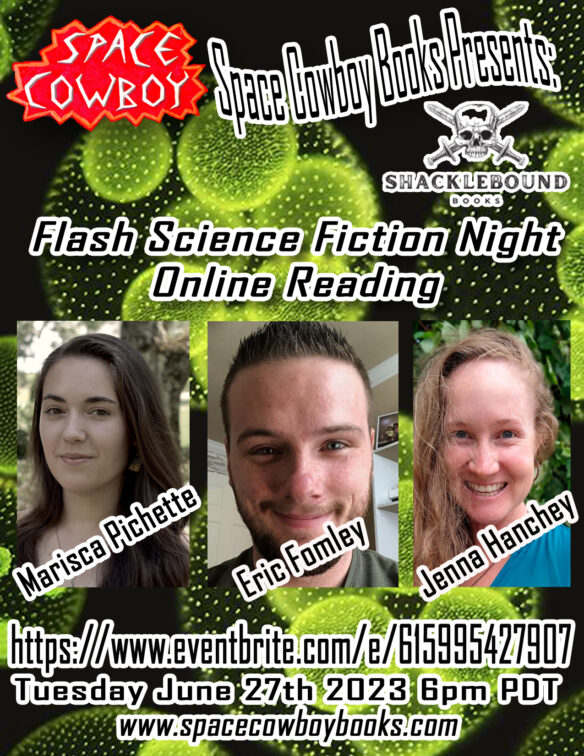
(14) VIDEO OF THE DAY. With a new Transformers movie coming out, How It Should Have Ended decided to remaster its episode “How Transformers: Revenge of the Fallen Should Have Ended”.
[Thanks to Andrew Porter, John King Tarpinian, Chris Barkley, David Goldfarb, Dariensync, Michael Toman, Cat Eldridge, SF Concatenation’s Jonathan Cowie, and Mike Kennedy for some of these stories. Title credit belongs to File 770 contributing editor of the day Cat Eldridge.]

